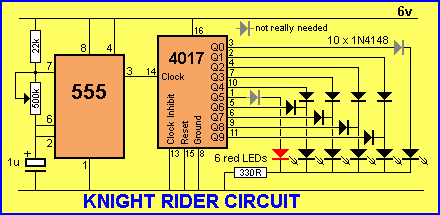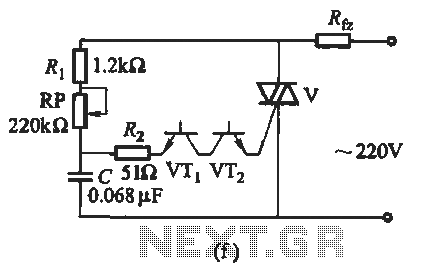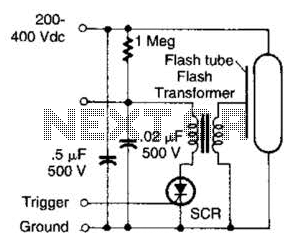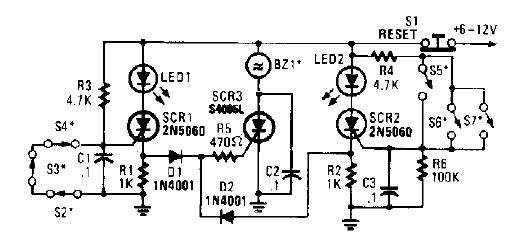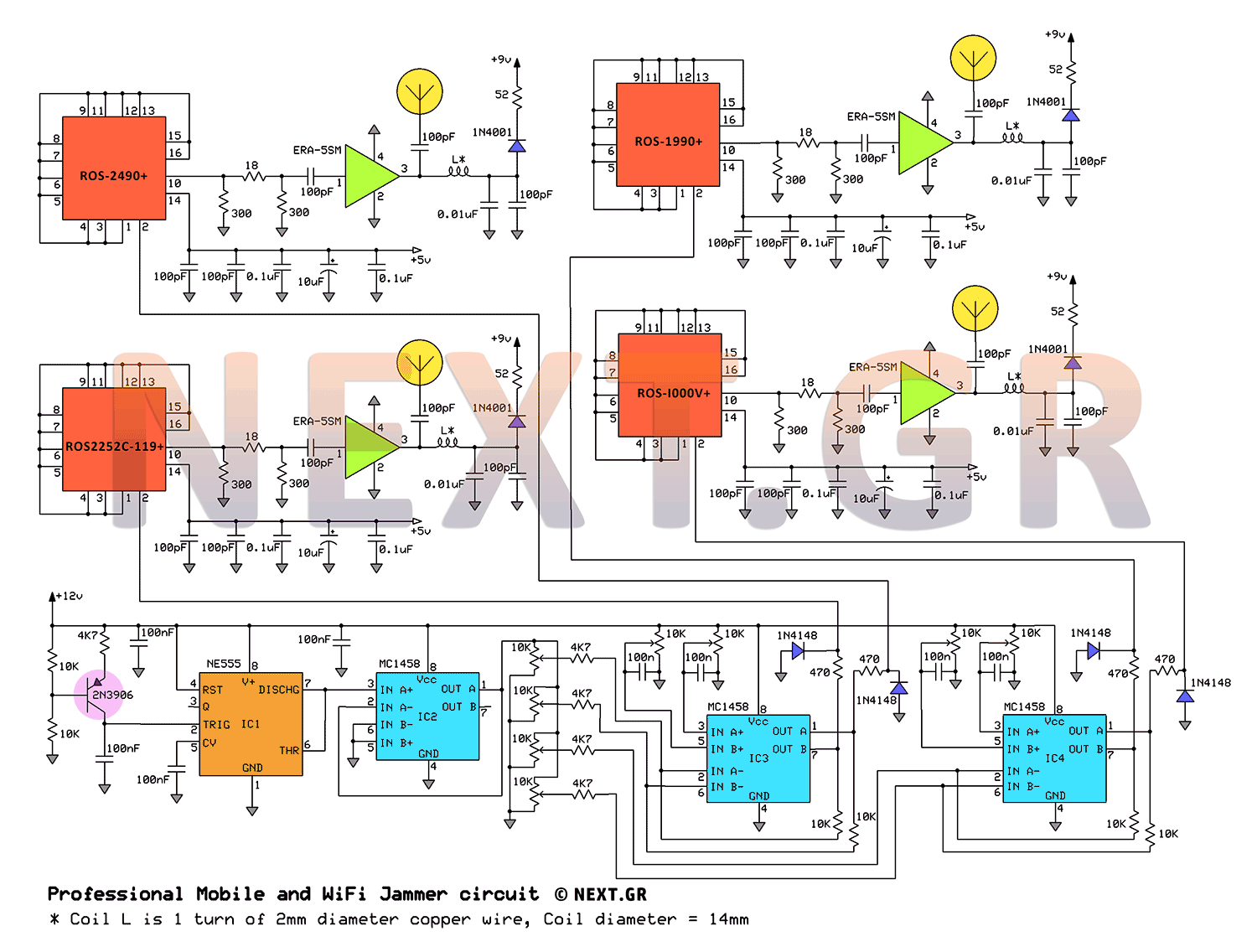
The contact resistance measuring circuit
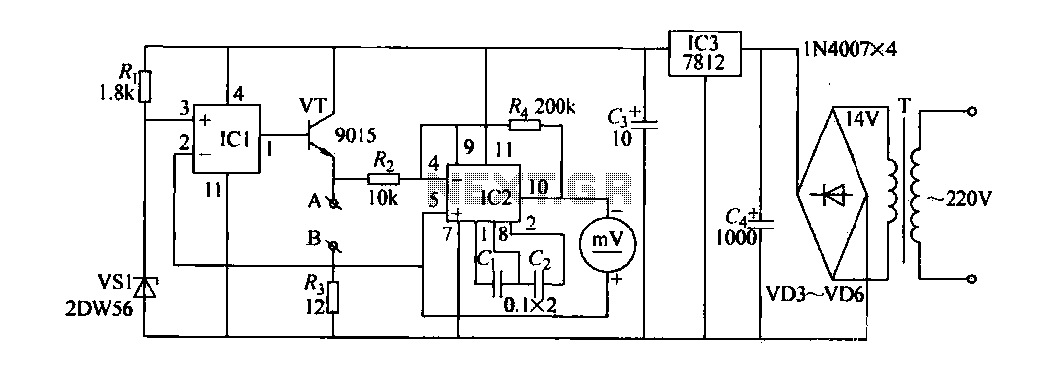
The contact resistance measuring circuit is illustrated in the figure. It primarily consists of a constant current circuit and an amplifying circuit. Operational amplifier IC1 is configured as a voltage follower, and the voltage across the load equates to the nominal regulator voltage VS1. Given the fixed resistance Ra, the current through Rs remains constant. The measured resistance is connected at points A and B, where the current value is low, allowing the resistance to be inferred from the voltage across the load. This enables the measurement of resistance between points A and B, which is in a proportional relationship. The electrical resistance measurements are converted into voltage measurements. Operational amplifier IC2, along with its external RC components, forms an inverting amplifier that amplifies the voltage between points A and B by a factor determined by Rz. The capacitor Cz connected to IC2 serves as a memory component. A millivoltmeter is connected to the output terminal of IC2 to measure the output voltage. A fixed output voltage Vo of 102 millivolts is established, with the voltage gain K. The rated stable voltage Vw is used to measure the resistance. The relationship is given by the formula VwR4Rn/R3Rz, where Rz, Ra, and V/R4 represent various resistances in the circuit. Components VD1 to VD6 and operational amplifier IC3 comprise the DC power supply, ensuring a stable 12V output voltage when using the meter.
The contact resistance measuring circuit is designed to provide accurate measurements of low resistance values by utilizing a constant current source and an operational amplifier-based amplification method. The key components include a constant current circuit that ensures a steady current flows through the resistance being measured, which is essential for reliable readings. The operational amplifier IC1 serves as a voltage follower, maintaining the voltage across the load equal to the reference voltage from the regulator.
The configuration of operational amplifier IC2 as an inverting amplifier allows for the amplification of the voltage difference between points A and B. The gain of this amplifier can be adjusted by selecting appropriate resistor values, specifically Rz, which plays a crucial role in determining the sensitivity and range of the measurements. The inclusion of the capacitor Cz aids in stabilizing the output voltage, ensuring that transient responses do not affect the accuracy of the readings.
The millivoltmeter connected to the output of IC2 provides a direct readout of the amplified voltage, which corresponds to the resistance being measured. The fixed output voltage Vo serves as a reference point for calibration and ensures that the measurements are consistent and repeatable. The overall design allows for precise measurement of contact resistance, making it suitable for applications in various electronic testing environments.
The circuit also incorporates diodes VD1 to VD6 for voltage regulation and protection, ensuring that the operational amplifiers and other sensitive components operate within their specified voltage limits. The power supply section, which provides a stable 12V output, is critical for maintaining the performance of the circuit, particularly when measuring resistances under varying load conditions. This comprehensive approach to resistance measurement enhances the reliability and accuracy of the circuit, making it an effective tool for engineers and technicians in the field.Contact resistance measuring circuit shown in FIG. It mainly consists of a constant current circuit and amplifying circuit. Operational amplifier 1C1 and form a transistor VT a follower, the voltage across the wind equals the nominal regulator VS1 steady voltage. Since the fixed resistance Ra, therefore, through Rs is a constant-current. Measured resistance string A, B-side, at the connection point with the measured resistance Ken, the current value is small, it can be measured by the resistance of the wind currents regarded as the same voltage, so that, A, B between the end and then only in the A, B-side test the resistance of the (proportional relationship). Electrical resistance measurements translate into voltage measurements. Op amp IC2 and its external RC element constituted an inverting amplifier, voltage A, B between amplification, magnification brother/Rz.
c], Cz IC2 is required memory capacitance. Millivoltmeter connected to the output terminal of IC2. Measurement IC2 output voltage. False 102 fixed output voltage Vo, the voltage magnification K., VD1 rated stable voltage Vw, the measured resistance to foot., There/Ct VwR4Rn/R3RZ R Rz Ra V/R4 Vw figure. T, VD3-VD6,1C3 other components constituting the DC power supply, AC power when using the meter, stable 12V output voltage.
The contact resistance measuring circuit is designed to provide accurate measurements of low resistance values by utilizing a constant current source and an operational amplifier-based amplification method. The key components include a constant current circuit that ensures a steady current flows through the resistance being measured, which is essential for reliable readings. The operational amplifier IC1 serves as a voltage follower, maintaining the voltage across the load equal to the reference voltage from the regulator.
The configuration of operational amplifier IC2 as an inverting amplifier allows for the amplification of the voltage difference between points A and B. The gain of this amplifier can be adjusted by selecting appropriate resistor values, specifically Rz, which plays a crucial role in determining the sensitivity and range of the measurements. The inclusion of the capacitor Cz aids in stabilizing the output voltage, ensuring that transient responses do not affect the accuracy of the readings.
The millivoltmeter connected to the output of IC2 provides a direct readout of the amplified voltage, which corresponds to the resistance being measured. The fixed output voltage Vo serves as a reference point for calibration and ensures that the measurements are consistent and repeatable. The overall design allows for precise measurement of contact resistance, making it suitable for applications in various electronic testing environments.
The circuit also incorporates diodes VD1 to VD6 for voltage regulation and protection, ensuring that the operational amplifiers and other sensitive components operate within their specified voltage limits. The power supply section, which provides a stable 12V output, is critical for maintaining the performance of the circuit, particularly when measuring resistances under varying load conditions. This comprehensive approach to resistance measurement enhances the reliability and accuracy of the circuit, making it an effective tool for engineers and technicians in the field.Contact resistance measuring circuit shown in FIG. It mainly consists of a constant current circuit and amplifying circuit. Operational amplifier 1C1 and form a transistor VT a follower, the voltage across the wind equals the nominal regulator VS1 steady voltage. Since the fixed resistance Ra, therefore, through Rs is a constant-current. Measured resistance string A, B-side, at the connection point with the measured resistance Ken, the current value is small, it can be measured by the resistance of the wind currents regarded as the same voltage, so that, A, B between the end and then only in the A, B-side test the resistance of the (proportional relationship). Electrical resistance measurements translate into voltage measurements. Op amp IC2 and its external RC element constituted an inverting amplifier, voltage A, B between amplification, magnification brother/Rz.
c], Cz IC2 is required memory capacitance. Millivoltmeter connected to the output terminal of IC2. Measurement IC2 output voltage. False 102 fixed output voltage Vo, the voltage magnification K., VD1 rated stable voltage Vw, the measured resistance to foot., There/Ct VwR4Rn/R3RZ R Rz Ra V/R4 Vw figure. T, VD3-VD6,1C3 other components constituting the DC power supply, AC power when using the meter, stable 12V output voltage.
Warning: include(partials/cookie-banner.php): Failed to open stream: Permission denied in /var/www/html/nextgr/view-circuit.php on line 713
Warning: include(): Failed opening 'partials/cookie-banner.php' for inclusion (include_path='.:/usr/share/php') in /var/www/html/nextgr/view-circuit.php on line 713
